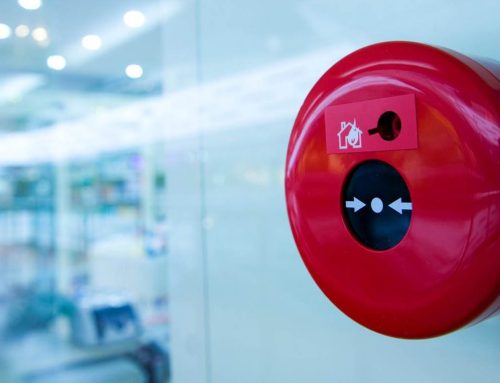This guide will help you understand the landlord’s main responsibilities regarding fire safety and provide tips for conducting a fire risk assessment of your rental property.
Fire regulations for rental properties
Failure to comply with the latest laws can result in penalties such as fines and imprisonment.
Fire protection regulations for rental properties are regulated by various laws. To help you understand your responsibilities, we have outlined some of the most important ones below.
Furniture and Furnishings (Fire Safety) Regulations 1988/1989, 1993 and 2010
These regulations determine the minimum fire resistance required for furniture and accessories for rental properties.
The furniture or accessories supplied to your property must be properly marked to indicate that they meet the declared ignition resistance values.
The Housing Act 2004
This law, including Home Health and Safety Assessment System (HHSRS) describes many of the fire protection responsibilities that apply to landlords in the UK.
It states that there must be an easy route to evacuate in the event of a fire and that flame-retardant materials should be used in the design of the building whenever possible.
The Regulatory Reform (Fire Safety) Order (2005)
Under this fire safety regulation, the person responsible for a multi-family home (such as a landlord) conducts a fire assessment in a common area and ensures that preparations and procedures are in place to protect the resident in the event of a fire. This applies to commonly used areas such as communal kitchens and apartment corridors.
The Smoke and Carbon Monoxide Alarm (England) Regulations 2015
This legislation was amended in 2022 in England.
Regulations vary in different parts of the UK, but in most cases smoke detectors should be installed on all floors and rooms with fuel-burning appliances such as a wood-burning stove.
Initially, the legislation only required the installation of warning systems to protect tenants from the dangers of fire, smoke and carbon monoxide. The 2022 amendments introduced five key changes.
1. Increasing the number of carbon monoxide alarms in rental properties
Previously, you only had to install a carbon monoxide alarm in any room that was considered living accommodation and contained a fuel-burning appliance.
From October 1, 2022, the requirements will be extended to all rooms with a fixed combustion appliance. For example, you need to deploy a carbon monoxide detector in a room with a boiler. However, the gas cookers are excluded.
This change means that electric properties are likely to require more carbon monoxide detectors.
2. Landlords now responsible for repairing and replacing faulty alarms
Originally, the responsibility for repairing and replacing carbon monoxide detectors rested with the tenant, not the landlord. They were only responsible before moving in.
After October 1, 2022, you are responsible for repairing or replacing defective alarms at any time during the rental period. The lessor must report it to you and once it is reported you have a legal obligation to inspect, repair and / or replace it.
The time frame for this is not clear. The law states that a replacement is necessary if it is “reasonably viable”, but it means that the landlord needs to act as soon as possible.
3. Tenants still responsible for reporting faulty alarms
Tenants will still be responsible for reporting faulty alarms.
4. Local authorities to better consider landlord written defences
Similar to the current rules, non-compliance landlords face corrective action and fines of up to £ 5,000.
However, the new rules impose new obligations to better consider written explanations in response to corrective actions, increasing the likelihood of protection from local governments.
The notice will be suspended while the local authority reviews the decision.
5. Amendments to HMO and property licence conditions
The new regulations will be reflected in the licence conditions after October 1st, 2022.
Building Regulations
You are also subject to building regulations. All responsibility for compliance rests with the owner.
Landlord fire risk assessment: key things to consider
When performing a risk assessment in a rental property, walk around the house or apartment and look for potential fire hazards such as:
Areas of the home that need reliable smoke and carbon monoxide alarms. At least one smoke alarm per floor is a UK-wide requirement, but you may need to take additional precautions depending on where the property is located.
Escape routes that aren’t clear or easy to exit the building from. Make sure your tenants understand their responsibility to keep the exits clear, too.
Electrical appliances that don’t display the necessary European or British safety labels. These include the CE mark for European products and the kitemark for British products. If they don’t display this label, they need to be replaced
Appliances that haven’t been PAT (Portable Appliance Test) tested each year.
An old or faulty gas cooker must be lit using matches rather than a spark device. This should be fixed or upgraded according to fire safety regulations.
What are the fire safety rules for houses in multiple occupation (HMOs)?
Houses in multiple occupation (HMOs) require additional fire safety precautions, although the specific conditions will depend on where the property is.
Your local housing authority will be able to advise you on the regulations that apply to your property – contact them to find out which rules affect you.






